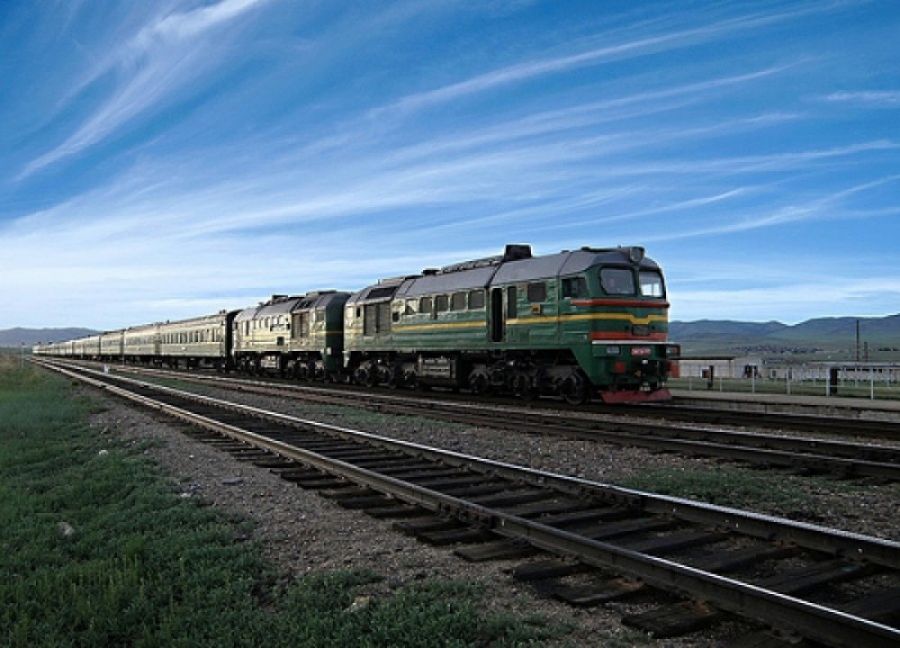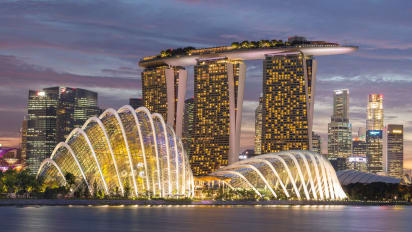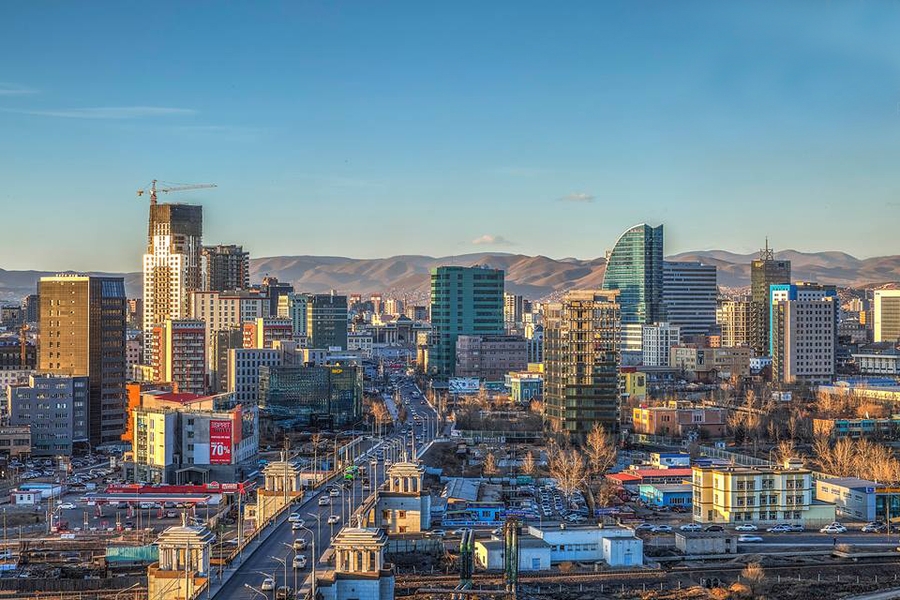Events
| Name | organizer | Where |
|---|---|---|
| MBCC “Doing Business with Mongolia seminar and Christmas Receptiom” Dec 10. 2025 London UK | MBCCI | London UK Goodman LLC |
NEWS

China extends rare earth controls to imported material www.mining.com
China has rolled out tighter controls on the mining and processing of rare earths by extending its quota system to include imported materials and requiring enterprises to report on the flow of strategic minerals regularly.
According to documents from departments led by the Ministry of Industry and Information Technology (MIIT), the new provisions stipulate that China’s quota system would apply not only to domestically produced rare earths, but also to those coming from abroad for refining.
China currently leads the global production of rare earths—a group of 17 elements that are essential to a wide range of high-tech and green technologies, including electronics, electric vehicles and wind turbines. The country also controls nearly all of the minerals’ processing, making it the undisputed dominant player in the rare earth supply chain.
In addition to the inclusion of imported minerals in the new quota system, companies involved in the production process must now submit monthly data on rare earth flows, including imports, into a newly established government information platform by the 10th of each month.
According to a report by the South China Morning Post, these rules were issued as guidelines on implementing the country’s Rare Earth Management Regulations that took effect this past October.
The documents, which the Hong Kong-based paper says are effective immediately, specifically detailed how government agencies should manage quotas for designated companies and make the flow of rare earth products traceable.
The latest move aligns with a string of recent regulatory actions, from adding rare earths and magnets to export restriction lists in April to issuing 2025 production quotas without the customary public notice—a sign of more discreet but firm regulatory posture.
“Compared to the previous quota system, which only regulated domestic raw materials, the new measures explicitly regulate imported ones,” stated Li Chao, chief analyst at Guojin Securities, adding that it further enhances China’s control over the rare earth supply chain.
Although official production and export quota figures were not disclosed, penalties for non‑compliance may include fines and cuts to future allocations.

Mining Week 2025 to Be Held in September www.montsame.mn
The Ministry of Mining and Heavy Industry (MMHI), Mineral Resources and Petroleum Authority, and the Mongolian National Mining Association (MNMA) will co-organize the “Mining Week & Mine Pro 2025” International Expo Convention for the fourth consecutive year from September 11 to 13, 2025.
This year’s Mining Week will be held under the main theme “Mining Momentum in Mongolia: Driving Progress and Responsibility” at the foot of the Taij Mountain in Nalaikh District. International reputable sector associations will participate, including the Mining Association of Canada, which formulated the Towards Sustainable Mining (TSM) standard, and the China Mining Association, which is cooperating with the MNMA to expand investment and export.
According to the MMHI and MNMA, during Mining Week 2025, stakeholders will discuss sustainable development policies, responsible mining, investment opportunities, global trends, geological research and exploration, new energy, challenges facing the oil sector, and advanced technology. The discussions will also focus on ensuring a sustainable industrial value chain and advancing industrialization through strategic policies and emerging trends.
Suppliers, significant mining projects, international investors, financial organizations, consultancy and technology companies will participate in the Convention, where stakeholders will have the opportunity to share information and commence business partnerships.
Event highlights include Business Matchmaking sessions, designed to facilitate targeted networking and partnership development, the “Future Engineers,” aimed at providing information on new technology and professions in the sector, as well as the Miners’ Naadam Festival.
...

Mongolia converts mainline diesel locomotive to hybrid traction for the first time www.rollingstockworld.com
The state-owned company Mongolian Railway has converted a 2TE116 locomotive to diesel-battery hybrid traction. The project was carried out for a year together with Chinese experts.
The traction system of the renewed locomotive consists of two 440 kW batteries and two 400 kW engines. The total power of the six-axle vehicle, designated the ESO, is 1,680 kW. It is claimed that the locomotive’s fuel consumption was decreased by 60–70%, with harmful emissions eliminated. Externally, the ESO resembles a shunter, but its intended operational role remains unspecified.
The refurbished double-section locomotive 2TE116 was produced in 1984 at the Lugansk Locomotive Works and has been out of service since 2014 due to having reached the end of its operational life. The current fleet of the Ulaanbaatar Railway in Mongolia includes four locomotives of this series.

Mongolia-Singapore Cooperation to Advance www.montsame.mn
Minister of Foreign Affairs of Mongolia, Battsetseg Batmunkh, received Senior Minister of State of Foreign and Home Affairs of the Republic of Singapore, Sim Ann, on August 21, 2025.
Minister Battsetseg Batmunkh commenced the meeting by noting that 2025 marks the 55th anniversary of the establishment of diplomatic relations between Mongolia and Singapore, and expressed her appreciation for Minister Sim Ann’s participation in the 10th Foreign Ministers’ Meeting of the Forum for East Asia-Latin America Cooperation (FEALAC).
The Minister Battsetseg further emphasized that relations and cooperation with Southeast Asian countries hold a significant position in Mongolia’s foreign policy toward the Asia-Pacific region, and reaffirmed her commitment to strengthening mutually beneficial collaboration with Singapore, a key member of ASEAN.
Minister Sim Ann congratulated Mongolia on the successful organization of the FEALAC’s 10th Foreign Ministers’ Meeting, expressing her willingness to collaborate in enriching and advancing bilateral relations with a strong economic dimension. Both parties reaffirmed their commitment to close cooperation within the framework of the United Nations and other international cooperation organizations.

FIBA U16 Asia Cup to Be Held in Mongolia www.montsame.mn
The International Basketball Federation (FIBA) will organize the Asia Cup for boys aged 16 and under (U16) from August 31 to September 7, 2025, in Ulaanbaatar, Mongolia.
The Mongolian National U16 Basketball Team will compete in the FIBA U16 Asia Cup for the first time in Group C, along with teams from the People’s Republic of China, the Republic of Korea, and Malaysia. The champion of this tournament will earn the right to compete in the U17 World Championships 2026. The Mongolian team, which began its rehearsals on June 1, 2025, plans to have a friendly match with the national teams from New Zealand and the Kingdom of Bahrain on August 27 and 28, 2025. At the initiative of Head Coach Vassilis Fragkias, the U16 and U18 teams are rehearsing together on weekends.
The tournament is a significant opportunity for youth athletes to showcase their skills and potential on the global stage. In the past, teams from the People’s Republic of China and the Commonwealth of Australia have won three times each, and the team from the Republic of Korea has won once in the FIBA U16 Asia Cup.

Mongolia’s Continuing Quest for Energy Security www.thediplomat.com
Mongolia’s new Prime Minister Zandanshatar Gombojav recently directed government agencies to prioritize early preparations for the upcoming winter. This includes conserving energy use and limiting exports of certain agricultural products to ensure adequate supplies during the winter season.
But to prepare for this winter, and winters to come, Mongolia will need to not only conserve energy but boost supply. Mongolia’s government is working to improve energy security, both through the use of fossil fuels and renewable energy sources.
Last week, Zandanshatar visited thermal power plants in the Ulaanbaatar city limits and assessed production levels. In an effort to increase energy production, the prime minister encouraged the plants to expand capacity by 50 percent.
At the same time, Mongolia is increasing investment in renewable energy and seeking partnership to support that transition. On August 20, Mongolia hosted the Fourth Mongolia-South Korea Strategic Forum, where Zandanshatar emphasized cooperation between the two countries in the introduction of modern renewable energy technology.
While the government is prioritizing energy reform, there are several underlining issues that needs to be addressed.
For years, Mongolia’s energy shortages have been a recurring issue for policymakers. Mass migration from the rural countryside to Ulaanbaatar has resulted in a population boom – and increased energy usage. The population shift to the capital is understandable; migrants are seeking better education and work. But the energy system is struggling to meet the demand now that Ulaanbaatar is home to one-third of the country’s population. The construction of high-rise apartment complexes and modern housing units will require additional energy sources.
In order to supply electricity to these new communities, Ulaanbaatar’s energy capacity must be increased. But to ensure true energy security, this needs to be done with an eye toward diversifying Mongolia’s energy sources.
As of 2022, coal supplied 86 percent of the country’s electricity, with another 4 percent coming from oil. Despite government interest, renewable energy remains limited, with wind, solar, and hydropower combining supplying less than 10 percent of electricity.
Mongolia currently aims to reach 30 percent solar power capacity by 2030. To reach this goal, Mongolia will need to incentivize foreign investment – but Ulaanbaatar needs to be selective and strategic about its partnerships.
In the first half of 2025, Mongolia became the second largest importer of Russian energy, importing 16 percent of its domestic energy consumption from Russia. By contrast, China’s imports of Russian energy have dropped. This highlights China’s growing energy self-reliance, in large part due to its success in establishing diverse renewable energy sources. While Mongolia and China have potential to cooperate in renewable energy, much of current Chinese investment remains focused in the mining sector.
In addition to China, Mongolia is hoping to boost investment in its energy sector from “third neighbors,” especially those with technological advantages like Japan and South Korea. In this context, the U.S. decision to reduce investment in wind and solar power will impact Mongolia’s renewable energy sector.
The Mongolian government is aiming to create an investment friendly environment. In comparison to the previous Oyun-Erdene Luvsannamsrai administration, Zandanshatar is leaning more toward liberalization of certain markets, reducing Public-Private Partnerships and abolishing 22 state-owned enterprises. But as Mongolia seeks to boost foreign investment, one of the major challenges facing the renewable energy sector specifically is that the laws have not been consistent. The initial law on renewable energy of 2007 was amended in 2008, 2009, 2011, 2012, 2019, and 2022. Having stable regulation will be crucial for attracting investment in renewable energy – and that, in turn, is key to ensuring Mongolia’s energy security.
Guest Author
Bolor Lkhaajav
Bolor Lkhaajav is a researcher specializing in Mongolia, China, Russia, Japan, East Asia, and the Americas. She holds an M.A. in Asia-Pacific Studies from the University of San Francisco.

Uranium Legal Regulations of Mongolia www.gratanet.com
The State Great Khural of Mongolia, by Resolution No. 45 on June 25, 2009, adopted the “State Policy of Mongolia on Radioactive Minerals and Nuclear Energy” and enacted the “Law on Nuclear Energy” on July 16, 2009. Upon the adoption and entry into force of the “Law on Amendments to the Law on Nuclear Energy" on January 6, 2023, the Mineral Resources and Petroleum Authority was designated as the competent authority for issuing, suspending, and revoking licenses for the exploration, exploitation, and use of radioactive minerals, as well as for related matters.
The “Law on the Procedure for Negotiating Investment Agreements with Investors under the Law on Nuclear Energy” was adopted and entered into force on January 9, 2025.
Furthermore, the Mongolian Nuclear Energy Commission has signed memorandums of understanding with countries including France, Japan, India, the Czech Republic, the United States, Russia, China, Canada, and South Korea to promote cooperation in the radioactive minerals sector and the development of the nuclear energy sector.
The Law on Nuclear Energy
According to the Law on Nuclear Energy, "radioactive minerals" are defined as mineral deposits containing radioactive isotopes of the uranium and thorium families. Pursuant to the Law, all radioactive mineral deposits, irrespective of their size, are classified as mineral deposits of strategic importance.
Read more https://gratanet.com/.../1529094/5618997812638335388.pdf

John Stampfl: I have seen many positive changes in Mongolia since 1998 www.gogo.mn
For the 'Mongolia through Foreign Eyes' column, we invited Mr. John Stampfl as our guest. He first came to Mongolia on a work assignment in 1998, and since 2001 he has been living permanently in Murun, Khuvsgul Province.
Please introduce yourself. Where are you from and how long have you been in Mongolia?
My name is John Stampfl. I was born in San Francisco, though I grew up in nearby towns within about 100 kilometers. I first came to Mongolia in 1998 when my uncle came here for a UN project. I joined him, met some people, and liked it so much that I started coming back. Eventually, I moved here in 2001.
From 2001 I lived in Mongolia continuously until two years before COVID. I had to leave to undergo an eye operation in Saipan, a U.S. Island, where I had cataract surgery. Afterwards, I tried to renew my work visa but got stuck abroad when Mongolia closed its borders during the pandemic. I stayed in the U.S. until I got vaccinated, then traveled around the U.S. and Eastern Europe before returning once the borders reopened.
In Ulaanbaatar, I lived in Sansar, Khan-Uul District, and near the old circus. Later, I moved to Murun, Khuvsgul, and for a time lived in Erdenebulgan. I’ve spent about five years in Murun altogether, including three years before COVID and a year and a half after. I know Murun well, though I’m more familiar with old UB than the newly built areas.
And what is your profession?
My original profession was systems engineering—essentially computer engineering. Now I work on forest conservation, particularly on issues related to global warming. With warmer winters, insects survive longer, killing more trees. On top of that, livestock such as sheep, goats, and cows eat young saplings, which prevents regeneration.
So, are you working in that field in Murun?
Yes. I volunteer for a friend’s logging company, researching how global warming impacts forests. This problem isn’t unique to Mongolia—it’s happening worldwide, including in the U.S. Insects thrive in warmer climates, causing increasing damage. Normally, colder winters would kill off more insects, but as winters get milder, this becomes a bigger issue.
What was your first impression when you came to Mongolia?
That was back in 1998. We stayed at the Grand Chinggis Hotel, which even had a nightclub shaped like a ger on the top floor. There was almost no traffic then, since very few people owned cars.
When I moved here in 2001, I studied Mongolian at the National University and taught English there. Later, I joined Peace Corps speaking clubs in Murun and helped students practice English. Some of them went on to study in Europe, and I’m still in touch with them today.
Do you know much Mongolian?
A little, but I don’t practice much since most people prefer speaking English. That’s fine with me—it’s important for young people to learn English.
What kind of accommodation do you have in Murun?
Currently, I live in a modern apartment. Before that, I lived in part of a wooden house where I had to haul water and chop wood. The apartment is much easier.
What is your favorite Mongolian food?
There’s a small restaurant near my home that serves tumsnii khuchmal, which is similar to shepherd’s pie with mashed potatoes on top. It comes with potato, cabbage, carrot salads, and rice. That’s my favorite. I also eat buuz and khuushuur occasionally, though they’re a bit too greasy for me.
What is your daily routine like?
I usually wake up before 7 a.m. and go to Nara’s Gym in Murun. I walk a lot, and sometimes I help teach English classes.
Do you have pets?
No. I like pets, but I travel too often to care for them. When I lived in the U.S. with my daughter, we had cats and a dog.
Are you married?
I have been married three times, but none worked out. Currently, I’m not married.
What do you like most about living in Khuvsgul?
I love the trees, rivers, and greenery. I often visit Erdenebulgan on the east side of Lake Khuvsgul because of my friend’s logging company. It’s beautiful there. I also like Arkhangai—great for camping, with less mud and many historical sites. Over the years, I’ve traveled to every province in Mongolia, often camping along the way.
What do you think about Mongolia’s “One Billion Trees” initiative?
It’s a good slogan—it raises awareness. Reaching a billion is unlikely soon, but the focus should be on restoring forests. Planting is important, but saplings often die if planted in the wrong place or eaten by livestock. In towns like Murun, they fence young trees, but in the countryside it’s harder. Education about forests is just as important so future generations will value trees more.
In the U.S., especially in places like Montana, people used to practice what they called “clear-cutting.” That meant going in and cutting down all the trees in an area. Now, they don’t have nearly as many trees left. Most of the wood used in the U.S. today comes from Canada because so many of the trees in Montana were cut down.
The problem is, if you don’t replant after cutting, the forest doesn’t naturally come back the same way. It’s much better to cut some trees and leave others so the forest can keep regenerating on its own. A hundred years ago, people didn’t think about that. They assumed there were endless trees, so it didn’t matter. But eventually, they cut so many that there are hardly any large, old trees left in Montana. Now there are mostly small trees. They’ve been replanting, but it takes a long time for trees to grow to maturity.
Here in Mongolia, up near Sükhbaatar City, there also used to be a lot of big trees. Now there’s just a small section where a few large ones remain, and people call them the “mother trees.” I’ve visited that area—it’s beautiful—but I believe the whole region was once covered with forest before it was cut down.
More trees really need to be planted there. It would make a big difference. But this isn’t only something that happened in Mongolia; it has happened in many places. In the U.S., for example, huge areas of forest were cleared, partly to create farmland in the summers.
What kind of developments would you like to see in Mongolia?
Mongolia has improved a lot—there are many more paved roads than when I first came. But more railroads, especially an east–west line, would greatly benefit business and trade.
I also think Mongolia should develop international internship programs. Sending young professionals to gain hands-on experience in industries abroad could help them bring back modern skills and knowledge.
What challenges have you faced living in Mongolia?
Life is generally good. One issue is that Mongolia could benefit from more expert volunteers—not necessarily young people teaching English, but experienced professionals in different industries. Countries like Japan send retired specialists abroad to share their expertise, and Mongolia could benefit from similar programs.
What did you learn the most after you came to Mongolia?
Well, one of the most interesting things has been learning about herding culture and how extended families work together in the herding industry. Of course, as more people move into the cities, that system begins to break down.
If you go out into the countryside, extended families are still working together in herding. It reminded me of something from my own family history. Both of my parents grew up in large families—each with around eight kids. That used to be very common in the U.S., but now most families only have one or two children. In the countryside, though, having many kids is actually helpful. Children can herd animals, milk cows, haul water, and do all sorts of chores that contribute to the household.
But in the city, kids don’t really have those opportunities. Instead, parents have to find ways to take care of them, which creates challenges. For example, I have a friend with four children. In the summer, she can’t work because there’s no school or kindergarten to take care of the kids, and she can’t afford private help. During the school year, there’s support, but in summer, parents are on their own.
What’s really needed are year-round programs for children so parents—especially women who want careers—can continue working. Right now, many women limit themselves to one or two kids because they know it will be too difficult to manage more. If there were stronger support systems or government programs to provide childcare year-round, families might feel freer to have more children. Some parents rely on grandparents to help, but not everyone has that option.
What is a bright memory you have from Mongolia?
Camping at Lake Khuvsgul and visiting students’ families in the countryside are unforgettable experiences. I really enjoyed seeing their way of life firsthand.
What life advice would you give to young people?
Education is important, but so is hard work and honesty. Skills are key—whether you want to be an electrician, plumber, or journalist, keep improving yourself. Opportunities come when you are skilled and reliable.
Family is also important, though modern city life makes it harder than in the countryside. Whatever profession you choose, keep learning, and don’t be afraid to pursue it even later in life. I once read about a woman who became an archaeologist at 60—it’s never too late.
Any final thoughts?
Mongolia is a peaceful country with very friendly people, especially in the countryside. I’ve seen many positive changes since 1998—better roads, new hospitals, more cars, improved infrastructure. Life here keeps improving step by step, and I’m optimistic about the future.
Thank you so much for your time, John!
BY B.Nyamdari

The 10th Foreign Ministers’ Meeting of FEALAC Underway www.montsame.mn
The 10th Meeting of Foreign Ministers of the Forum for East Asia-Latin America Cooperation (FEALAC) is currently being held in Ulaanbaatar.
The FEALAC Foundation Board of Directors, along with the Political, Cultural, Economic, and Humanitarian Working Groups, convened their respective meetings on August 20, 2025. These sessions were held as part of the commemorative events marking the 25th anniversary of the Forum for East Asia-Latin America Cooperation (FEALAC). During the meeting, member countries are set to engage in discussions under the theme “25 Years and Beyond: A Vision for East Asia-Latin American Cooperation”, with plans to adopt the “Ulaanbaatar Declaration” as a key outcome.
The Forum, which brings together 16 East Asian and Pacific countries and 20 Latin American countries, is co-chaired by Mongolia and the Dominican Republic for the 2025-2027 term. This marks the first meeting of Foreign Ministers since 2019.
The 10th Foreign Ministers’ Meeting continues from August 20 to 22, 2025.

TMK set for production from seven wells at Mongolian gas field www.smh.com.au
TMK Energy has completed its seventh and final pilot production well at its giant Gurvantes XXXV coal seam gas project in Mongolia’s South Gobi Basin.
The company says it is now poised to bring all seven wells to optimal production rates in the Lucky Fox area by the end of August, accelerating its reservoir depressurisation efforts to unlock final commercial gas flows at the pilot production area.
The Lucky Fox 7 (LF-07) well is currently undergoing final commissioning and production is expected to commence in the coming days.
The company has utilised its onsite resources to perform essential maintenance on the neighbouring LF-06 well, which involved cleaning the downhole pump and clearing fill to prevent future interruptions at fully depressured commercial flows. Production at LF-06 is now reinstated.
‘With seven pilot production wells online, we hope and expect to soon see all the hard work and capital investment that has been made bearing fruit.’
TMK Energy chief executive officer Dougal Ferguson
All seven active wells at the Lucky Fox Pilot project now have operational redundancy, meaning that all capital costs are accounted for and the reservoir will only require maintenance to manage production.
Commissioning LF-07 will provide TMK with critical data on reservoir pressure reduction at its location, which is about the same distance from the company’s LF-01, LF-02 and LF-05 wells. The desorption pressure must be consistent across the pilot reservoir area to return a smooth commercial gas flow following dewatering.
TMK will now shift its focus to operational efficiency and strategic partnerships over its mammoth project. The company is looking for project partners to co-fund the next phase of development at Gurvantes XXXV, 50 kilometres from China’s Shivee Khuren border, to streamline logistics and enhance cost-effectiveness.
TMK Energy chief executive officer Dougal Ferguson said: “With the drilling operations phase now complete, there is no further major capital expenditure planned at the Pilot Well project in the short to medium term. With seven pilot production wells online, we hope and expect to soon see all the hard work and capital investment that has been made bearing fruit. All the data continues to point to a positive outcome being achieved in the coming months, with reservoir pressures continuing to reduce towards the target critical desorption pressure.”
Spanning a gargantuan 8400 square kilometres, Gurvantes XXXV hosts Mongolia’s largest 2C contingent resource of 1.2 trillion cubic feet of natural gas and a prospective resource of 5300 billion cubic feet.
The project offers massive strategic value to Mongolia, as the largely coal-dominated country accelerates its transition to cleaner energy. TMK’s project is a central pillar to meeting the nation’s domestic demand.
The company is simultaneously tapping into northern China’s robust energy infrastructure. It recently entered a strategic alliance with Beijing-based J-Energy to enhance the project’s technical and logistical capabilities towards full commercialisation.
With all seven wells set to reach optimal production by the end of the month, TMK has cleared the final hurdle to demonstrate commercial viability at Gurvantes XXXV. It is now prioritising strategic, high-quality partnerships to establish itself as a dependable natural gas supplier for Mongolia’s domestic market and the region’s energy network.
- «
- 1
- 2
- 3
- 4
- 5
- 6
- 7
- 8
- 9
- 10
- 11
- 12
- 13
- 14
- 15
- 16
- 17
- 18
- 19
- 20
- 21
- 22
- 23
- 24
- 25
- 26
- 27
- 28
- 29
- 30
- 31
- 32
- 33
- 34
- 35
- 36
- 37
- 38
- 39
- 40
- 41
- 42
- 43
- 44
- 45
- 46
- 47
- 48
- 49
- 50
- 51
- 52
- 53
- 54
- 55
- 56
- 57
- 58
- 59
- 60
- 61
- 62
- 63
- 64
- 65
- 66
- 67
- 68
- 69
- 70
- 71
- 72
- 73
- 74
- 75
- 76
- 77
- 78
- 79
- 80
- 81
- 82
- 83
- 84
- 85
- 86
- 87
- 88
- 89
- 90
- 91
- 92
- 93
- 94
- 95
- 96
- 97
- 98
- 99
- 100
- 101
- 102
- 103
- 104
- 105
- 106
- 107
- 108
- 109
- 110
- 111
- 112
- 113
- 114
- 115
- 116
- 117
- 118
- 119
- 120
- 121
- 122
- 123
- 124
- 125
- 126
- 127
- 128
- 129
- 130
- 131
- 132
- 133
- 134
- 135
- 136
- 137
- 138
- 139
- 140
- 141
- 142
- 143
- 144
- 145
- 146
- 147
- 148
- 149
- 150
- 151
- 152
- 153
- 154
- 155
- 156
- 157
- 158
- 159
- 160
- 161
- 162
- 163
- 164
- 165
- 166
- 167
- 168
- 169
- 170
- 171
- 172
- 173
- 174
- 175
- 176
- 177
- 178
- 179
- 180
- 181
- 182
- 183
- 184
- 185
- 186
- 187
- 188
- 189
- 190
- 191
- 192
- 193
- 194
- 195
- 196
- 197
- 198
- 199
- 200
- 201
- 202
- 203
- 204
- 205
- 206
- 207
- 208
- 209
- 210
- 211
- 212
- 213
- 214
- 215
- 216
- 217
- 218
- 219
- 220
- 221
- 222
- 223
- 224
- 225
- 226
- 227
- 228
- 229
- 230
- 231
- 232
- 233
- 234
- 235
- 236
- 237
- 238
- 239
- 240
- 241
- 242
- 243
- 244
- 245
- 246
- 247
- 248
- 249
- 250
- 251
- 252
- 253
- 254
- 255
- 256
- 257
- 258
- 259
- 260
- 261
- 262
- 263
- 264
- 265
- 266
- 267
- 268
- 269
- 270
- 271
- 272
- 273
- 274
- 275
- 276
- 277
- 278
- 279
- 280
- 281
- 282
- 283
- 284
- 285
- 286
- 287
- 288
- 289
- 290
- 291
- 292
- 293
- 294
- 295
- 296
- 297
- 298
- 299
- 300
- 301
- 302
- 303
- 304
- 305
- 306
- 307
- 308
- 309
- 310
- 311
- 312
- 313
- 314
- 315
- 316
- 317
- 318
- 319
- 320
- 321
- 322
- 323
- 324
- 325
- 326
- 327
- 328
- 329
- 330
- 331
- 332
- 333
- 334
- 335
- 336
- 337
- 338
- 339
- 340
- 341
- 342
- 343
- 344
- 345
- 346
- 347
- 348
- 349
- 350
- 351
- 352
- 353
- 354
- 355
- 356
- 357
- 358
- 359
- 360
- 361
- 362
- 363
- 364
- 365
- 366
- 367
- 368
- 369
- 370
- 371
- 372
- 373
- 374
- 375
- 376
- 377
- 378
- 379
- 380
- 381
- 382
- 383
- 384
- 385
- 386
- 387
- 388
- 389
- 390
- 391
- 392
- 393
- 394
- 395
- 396
- 397
- 398
- 399
- 400
- 401
- 402
- 403
- 404
- 405
- 406
- 407
- 408
- 409
- 410
- 411
- 412
- 413
- 414
- 415
- 416
- 417
- 418
- 419
- 420
- 421
- 422
- 423
- 424
- 425
- 426
- 427
- 428
- 429
- 430
- 431
- 432
- 433
- 434
- 435
- 436
- 437
- 438
- 439
- 440
- 441
- 442
- 443
- 444
- 445
- 446
- 447
- 448
- 449
- 450
- 451
- 452
- 453
- 454
- 455
- 456
- 457
- 458
- 459
- 460
- 461
- 462
- 463
- 464
- 465
- 466
- 467
- 468
- 469
- 470
- 471
- 472
- 473
- 474
- 475
- 476
- 477
- 478
- 479
- 480
- 481
- 482
- 483
- 484
- 485
- 486
- 487
- 488
- 489
- 490
- 491
- 492
- 493
- 494
- 495
- 496
- 497
- 498
- 499
- 500
- 501
- 502
- 503
- 504
- 505
- 506
- 507
- 508
- 509
- 510
- 511
- 512
- 513
- 514
- 515
- 516
- 517
- 518
- 519
- 520
- 521
- 522
- 523
- 524
- 525
- 526
- 527
- 528
- 529
- 530
- 531
- 532
- 533
- 534
- 535
- 536
- 537
- 538
- 539
- 540
- 541
- 542
- 543
- 544
- 545
- 546
- 547
- 548
- 549
- 550
- 551
- 552
- 553
- 554
- 555
- 556
- 557
- 558
- 559
- 560
- 561
- 562
- 563
- 564
- 565
- 566
- 567
- 568
- 569
- 570
- 571
- 572
- 573
- 574
- 575
- 576
- 577
- 578
- 579
- 580
- 581
- 582
- 583
- 584
- 585
- 586
- 587
- 588
- 589
- 590
- 591
- 592
- 593
- 594
- 595
- 596
- 597
- 598
- 599
- 600
- 601
- 602
- 603
- 604
- 605
- 606
- 607
- 608
- 609
- 610
- 611
- 612
- 613
- 614
- 615
- 616
- 617
- 618
- 619
- 620
- 621
- 622
- 623
- 624
- 625
- 626
- 627
- 628
- 629
- 630
- 631
- 632
- 633
- 634
- 635
- 636
- 637
- 638
- 639
- 640
- 641
- 642
- 643
- 644
- 645
- 646
- 647
- 648
- 649
- 650
- 651
- 652
- 653
- 654
- 655
- 656
- 657
- 658
- 659
- 660
- 661
- 662
- 663
- 664
- 665
- 666
- 667
- 668
- 669
- 670
- 671
- 672
- 673
- 674
- 675
- 676
- 677
- 678
- 679
- 680
- 681
- 682
- 683
- 684
- 685
- 686
- 687
- 688
- 689
- 690
- 691
- 692
- 693
- 694
- 695
- 696
- 697
- 698
- 699
- 700
- 701
- 702
- 703
- 704
- 705
- 706
- 707
- 708
- 709
- 710
- 711
- 712
- 713
- 714
- 715
- 716
- 717
- 718
- 719
- 720
- 721
- 722
- 723
- 724
- 725
- 726
- 727
- 728
- 729
- 730
- 731
- 732
- 733
- 734
- 735
- 736
- 737
- 738
- 739
- 740
- 741
- 742
- 743
- 744
- 745
- 746
- 747
- 748
- 749
- 750
- 751
- 752
- 753
- 754
- 755
- 756
- 757
- 758
- 759
- 760
- 761
- 762
- 763
- 764
- 765
- 766
- 767
- 768
- 769
- 770
- 771
- 772
- 773
- 774
- 775
- 776
- 777
- 778
- 779
- 780
- 781
- 782
- 783
- 784
- 785
- 786
- 787
- 788
- 789
- 790
- 791
- 792
- 793
- 794
- 795
- 796
- 797
- 798
- 799
- 800
- 801
- 802
- 803
- 804
- 805
- 806
- 807
- 808
- 809
- 810
- 811
- 812
- 813
- 814
- 815
- 816
- 817
- 818
- 819
- 820
- 821
- 822
- 823
- 824
- 825
- 826
- 827
- 828
- 829
- 830
- 831
- 832
- 833
- 834
- 835
- 836
- 837
- 838
- 839
- 840
- 841
- 842
- 843
- 844
- 845
- 846
- 847
- 848
- 849
- 850
- 851
- 852
- 853
- 854
- 855
- 856
- 857
- 858
- 859
- 860
- 861
- 862
- 863
- 864
- 865
- 866
- 867
- 868
- 869
- 870
- 871
- 872
- 873
- 874
- 875
- 876
- 877
- 878
- 879
- 880
- 881
- 882
- 883
- 884
- 885
- 886
- 887
- 888
- 889
- 890
- 891
- 892
- 893
- 894
- 895
- 896
- 897
- 898
- 899
- 900
- 901
- 902
- 903
- 904
- 905
- 906
- 907
- 908
- 909
- 910
- 911
- 912
- 913
- 914
- 915
- 916
- 917
- 918
- 919
- 920
- 921
- 922
- 923
- 924
- 925
- 926
- 927
- 928
- 929
- 930
- 931
- 932
- 933
- 934
- 935
- 936
- 937
- 938
- 939
- 940
- 941
- 942
- 943
- 944
- 945
- 946
- 947
- 948
- 949
- 950
- 951
- 952
- 953
- 954
- 955
- 956
- 957
- 958
- 959
- 960
- 961
- 962
- 963
- 964
- 965
- 966
- 967
- 968
- 969
- 970
- 971
- 972
- 973
- 974
- 975
- 976
- 977
- 978
- 979
- 980
- 981
- 982
- 983
- 984
- 985
- 986
- 987
- 988
- 989
- 990
- 991
- 992
- 993
- 994
- 995
- 996
- 997
- 998
- 999
- 1000
- 1001
- 1002
- 1003
- 1004
- 1005
- 1006
- 1007
- 1008
- 1009
- 1010
- 1011
- 1012
- 1013
- 1014
- 1015
- 1016
- 1017
- 1018
- 1019
- 1020
- 1021
- 1022
- 1023
- 1024
- 1025
- 1026
- 1027
- 1028
- 1029
- 1030
- 1031
- 1032
- 1033
- 1034
- 1035
- 1036
- 1037
- 1038
- 1039
- 1040
- 1041
- 1042
- 1043
- 1044
- 1045
- 1046
- 1047
- 1048
- 1049
- 1050
- 1051
- 1052
- 1053
- 1054
- 1055
- 1056
- 1057
- 1058
- 1059
- 1060
- 1061
- 1062
- 1063
- 1064
- 1065
- 1066
- 1067
- 1068
- 1069
- 1070
- 1071
- 1072
- 1073
- 1074
- 1075
- 1076
- 1077
- 1078
- 1079
- 1080
- 1081
- 1082
- 1083
- 1084
- 1085
- 1086
- 1087
- 1088
- 1089
- 1090
- 1091
- 1092
- 1093
- 1094
- 1095
- 1096
- 1097
- 1098
- 1099
- 1100
- 1101
- 1102
- 1103
- 1104
- 1105
- 1106
- 1107
- 1108
- 1109
- 1110
- 1111
- 1112
- 1113
- 1114
- 1115
- 1116
- 1117
- 1118
- 1119
- 1120
- 1121
- 1122
- 1123
- 1124
- 1125
- 1126
- 1127
- 1128
- 1129
- 1130
- 1131
- 1132
- 1133
- 1134
- 1135
- 1136
- 1137
- 1138
- 1139
- 1140
- 1141
- 1142
- 1143
- 1144
- 1145
- 1146
- 1147
- 1148
- 1149
- 1150
- 1151
- 1152
- 1153
- 1154
- 1155
- 1156
- 1157
- 1158
- 1159
- 1160
- 1161
- 1162
- 1163
- 1164
- 1165
- 1166
- 1167
- 1168
- 1169
- 1170
- 1171
- 1172
- 1173
- 1174
- 1175
- 1176
- 1177
- 1178
- 1179
- 1180
- 1181
- 1182
- 1183
- 1184
- 1185
- 1186
- 1187
- 1188
- 1189
- 1190
- 1191
- 1192
- 1193
- 1194
- 1195
- 1196
- 1197
- 1198
- 1199
- 1200
- 1201
- 1202
- 1203
- 1204
- 1205
- 1206
- 1207
- 1208
- 1209
- 1210
- 1211
- 1212
- 1213
- 1214
- 1215
- 1216
- 1217
- 1218
- 1219
- 1220
- 1221
- 1222
- 1223
- 1224
- 1225
- 1226
- 1227
- 1228
- 1229
- 1230
- 1231
- 1232
- 1233
- 1234
- 1235
- 1236
- 1237
- 1238
- 1239
- 1240
- 1241
- 1242
- 1243
- 1244
- 1245
- 1246
- 1247
- 1248
- 1249
- 1250
- 1251
- 1252
- 1253
- 1254
- 1255
- 1256
- 1257
- 1258
- 1259
- 1260
- 1261
- 1262
- 1263
- 1264
- 1265
- 1266
- 1267
- 1268
- 1269
- 1270
- 1271
- 1272
- 1273
- 1274
- 1275
- 1276
- 1277
- 1278
- 1279
- 1280
- 1281
- 1282
- 1283
- 1284
- 1285
- 1286
- 1287
- 1288
- 1289
- 1290
- 1291
- 1292
- 1293
- 1294
- 1295
- 1296
- 1297
- 1298
- 1299
- 1300
- 1301
- 1302
- 1303
- 1304
- 1305
- 1306
- 1307
- 1308
- 1309
- 1310
- 1311
- 1312
- 1313
- 1314
- 1315
- 1316
- 1317
- 1318
- 1319
- 1320
- 1321
- 1322
- 1323
- 1324
- 1325
- 1326
- 1327
- 1328
- 1329
- 1330
- 1331
- 1332
- 1333
- 1334
- 1335
- 1336
- 1337
- 1338
- 1339
- 1340
- 1341
- 1342
- 1343
- 1344
- 1345
- 1346
- 1347
- 1348
- 1349
- 1350
- 1351
- 1352
- 1353
- 1354
- 1355
- 1356
- 1357
- 1358
- 1359
- 1360
- 1361
- 1362
- 1363
- 1364
- 1365
- 1366
- 1367
- 1368
- 1369
- 1370
- 1371
- 1372
- 1373
- 1374
- 1375
- 1376
- 1377
- 1378
- 1379
- 1380
- 1381
- 1382
- 1383
- 1384
- 1385
- 1386
- 1387
- 1388
- 1389
- 1390
- 1391
- 1392
- 1393
- 1394
- 1395
- 1396
- 1397
- 1398
- 1399
- 1400
- 1401
- 1402
- 1403
- 1404
- 1405
- 1406
- 1407
- 1408
- 1409
- 1410
- 1411
- 1412
- 1413
- 1414
- 1415
- 1416
- 1417
- 1418
- 1419
- 1420
- 1421
- 1422
- 1423
- 1424
- 1425
- 1426
- 1427
- 1428
- 1429
- 1430
- 1431
- 1432
- 1433
- 1434
- 1435
- 1436
- 1437
- 1438
- 1439
- 1440
- 1441
- 1442
- 1443
- 1444
- 1445
- 1446
- 1447
- 1448
- 1449
- 1450
- 1451
- 1452
- 1453
- 1454
- 1455
- 1456
- 1457
- 1458
- 1459
- 1460
- 1461
- 1462
- 1463
- 1464
- 1465
- 1466
- 1467
- 1468
- 1469
- 1470
- 1471
- 1472
- 1473
- 1474
- 1475
- 1476
- 1477
- 1478
- 1479
- 1480
- 1481
- 1482
- 1483
- 1484
- 1485
- 1486
- 1487
- 1488
- 1489
- 1490
- 1491
- 1492
- 1493
- 1494
- 1495
- 1496
- 1497
- 1498
- 1499
- 1500
- 1501
- 1502
- 1503
- 1504
- 1505
- 1506
- 1507
- 1508
- 1509
- 1510
- 1511
- 1512
- 1513
- 1514
- 1515
- 1516
- 1517
- 1518
- 1519
- 1520
- 1521
- 1522
- 1523
- 1524
- 1525
- 1526
- 1527
- 1528
- 1529
- 1530
- 1531
- 1532
- 1533
- 1534
- 1535
- 1536
- 1537
- 1538
- 1539
- 1540
- 1541
- 1542
- 1543
- 1544
- 1545
- 1546
- 1547
- 1548
- 1549
- 1550
- 1551
- 1552
- 1553
- 1554
- 1555
- 1556
- 1557
- 1558
- 1559
- 1560
- 1561
- 1562
- 1563
- 1564
- 1565
- 1566
- 1567
- 1568
- 1569
- 1570
- 1571
- 1572
- 1573
- 1574
- 1575
- 1576
- 1577
- 1578
- 1579
- 1580
- 1581
- 1582
- 1583
- 1584
- 1585
- 1586
- 1587
- 1588
- 1589
- 1590
- 1591
- 1592
- 1593
- 1594
- 1595
- 1596
- 1597
- 1598
- 1599
- 1600
- 1601
- 1602
- 1603
- 1604
- 1605
- 1606
- 1607
- 1608
- 1609
- 1610
- 1611
- 1612
- 1613
- 1614
- 1615
- 1616
- 1617
- 1618
- 1619
- 1620
- 1621
- 1622
- 1623
- 1624
- 1625
- 1626
- 1627
- 1628
- 1629
- 1630
- 1631
- 1632
- 1633
- 1634
- 1635
- 1636
- 1637
- 1638
- 1639
- 1640
- 1641
- 1642
- 1643
- 1644
- 1645
- 1646
- 1647
- 1648
- 1649
- 1650
- 1651
- 1652
- 1653
- 1654
- 1655
- 1656
- 1657
- 1658
- 1659
- 1660
- 1661
- 1662
- 1663
- 1664
- 1665
- 1666
- 1667
- 1668
- 1669
- 1670
- 1671
- 1672
- 1673
- 1674
- 1675
- 1676
- 1677
- 1678
- 1679
- 1680
- 1681
- 1682
- 1683
- 1684
- 1685
- 1686
- 1687
- 1688
- 1689
- 1690
- 1691
- 1692
- 1693
- 1694
- »






